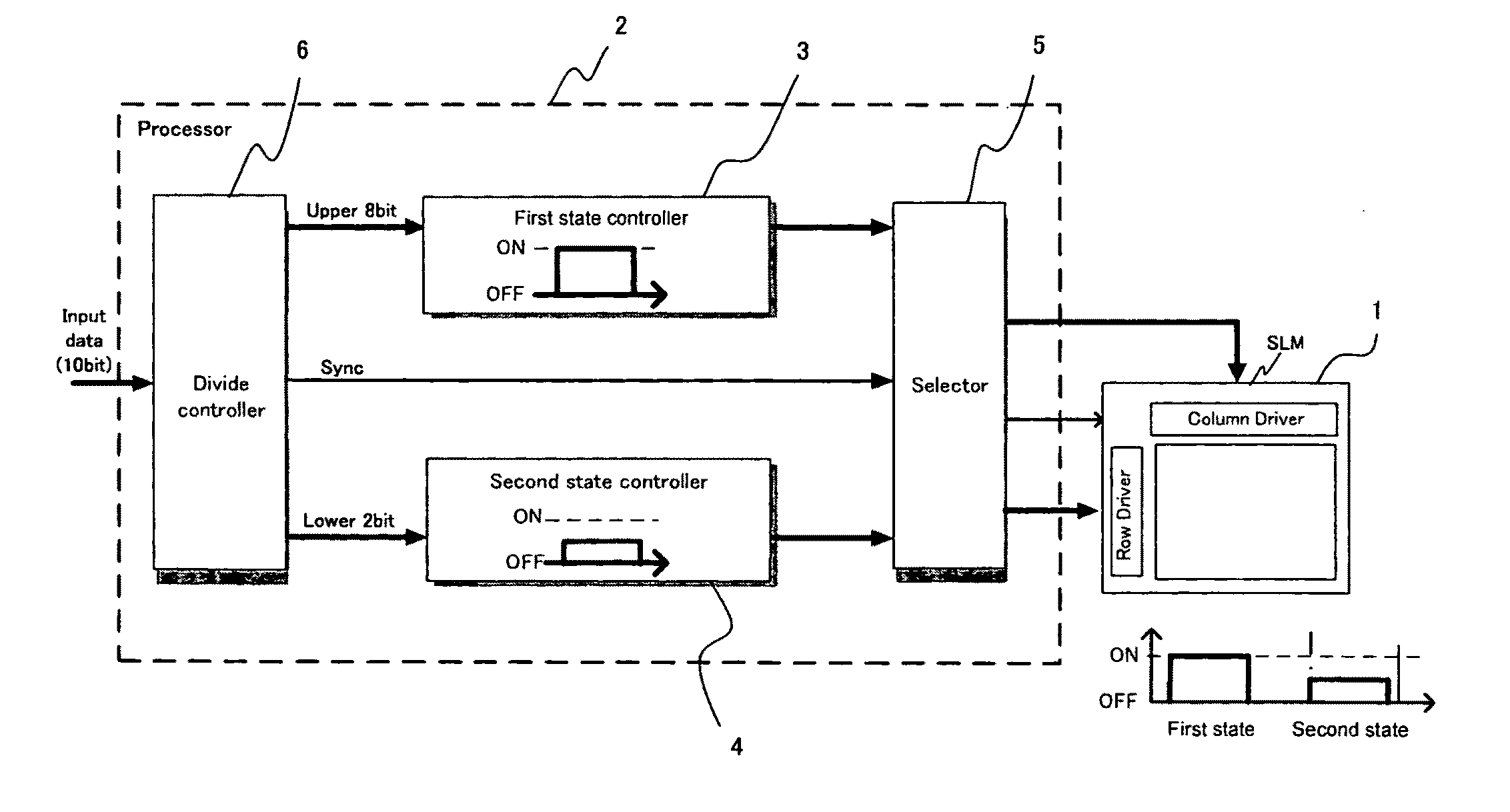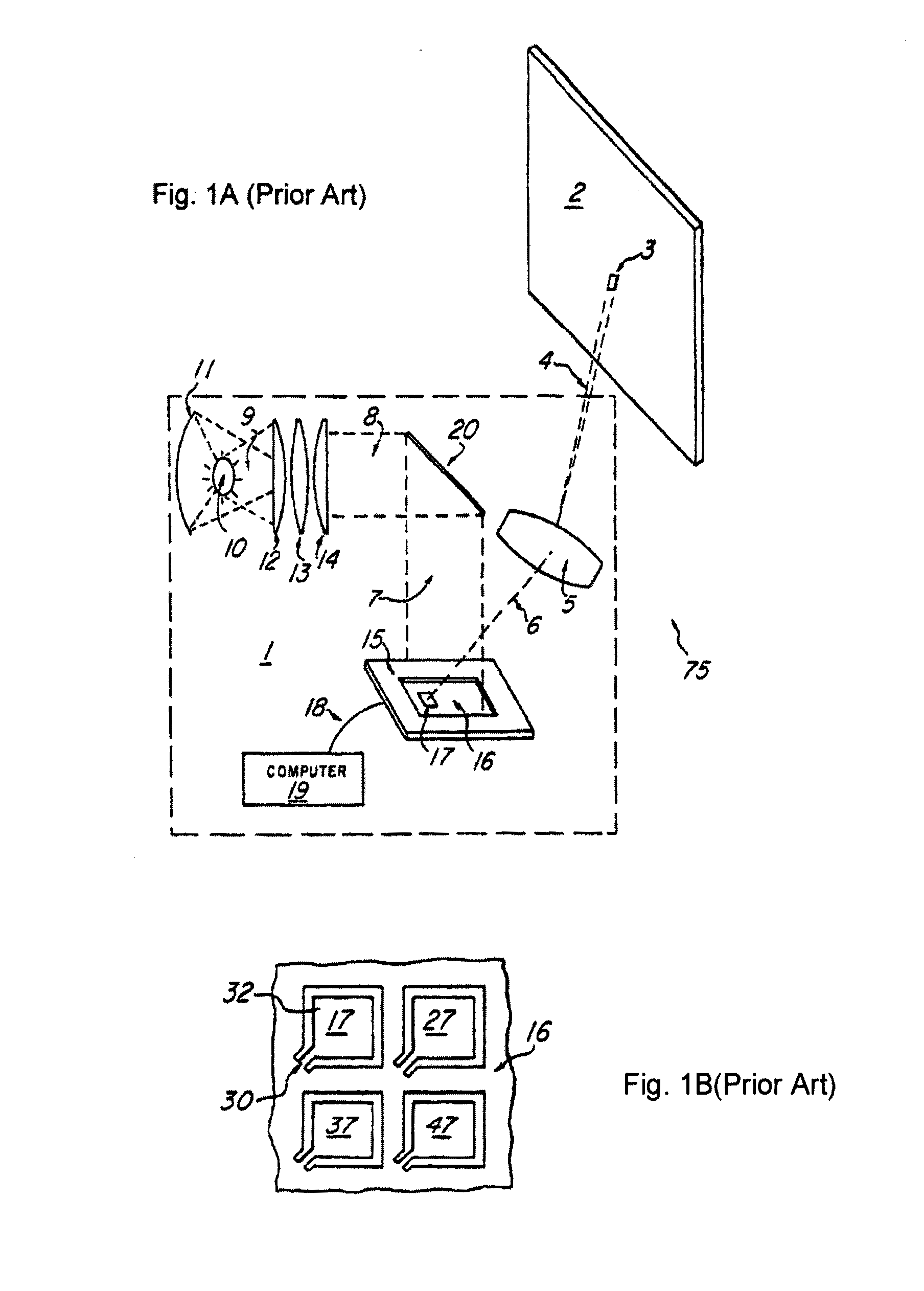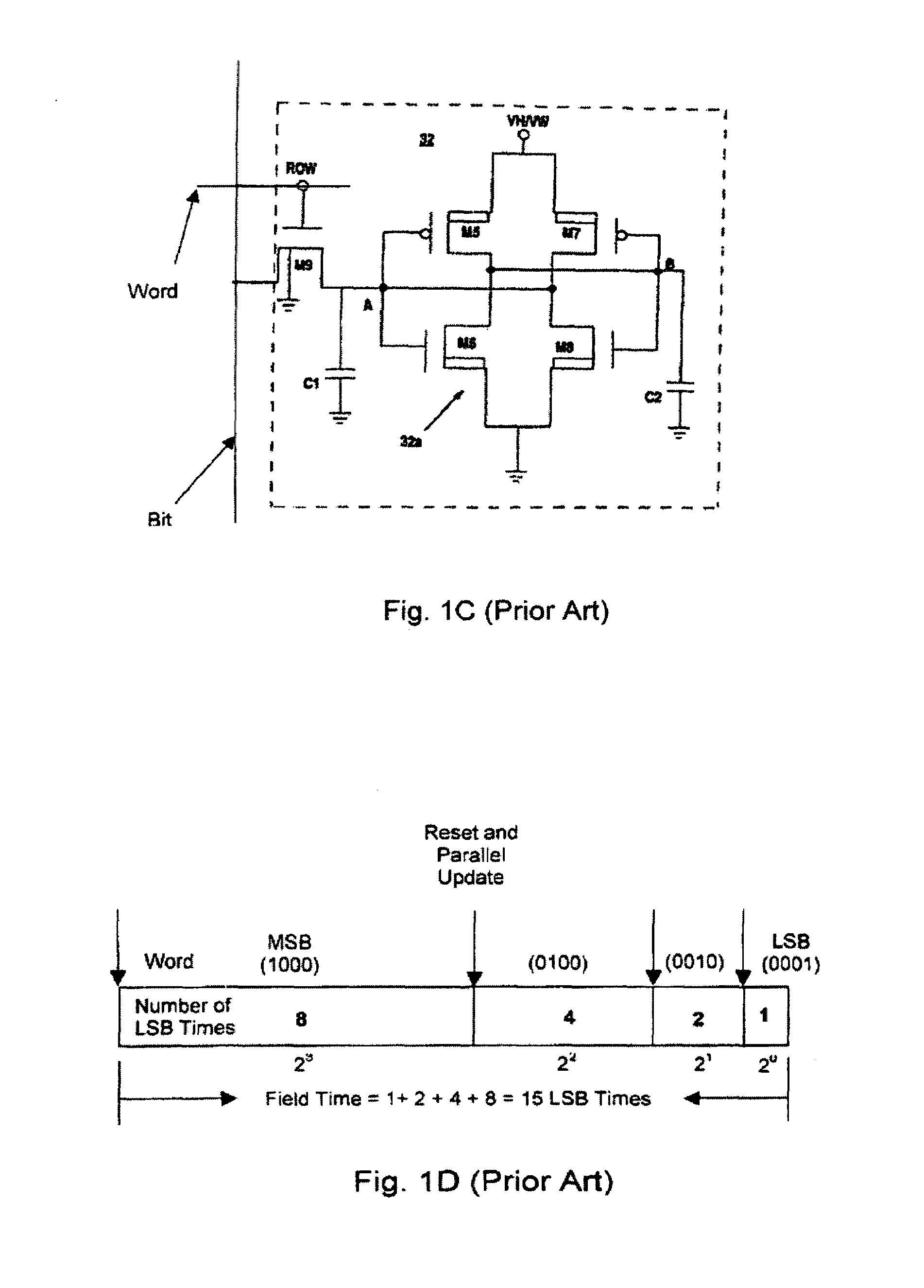Display control system for spatial light modulators
a control system and light modulator technology, applied in the field of display control system using spatial light modulator, can solve the problems of limited image display quality, adverse effects on image quality, limited image quality, etc., and achieve the effect of reducing the maximum output brightness, reducing the contrast, and high accuracy outpu
- Summary
- Abstract
- Description
- Claims
- Application Information
AI Technical Summary
Benefits of technology
Problems solved by technology
Method used
Image
Examples
Embodiment Construction
[0049]The following is a description of the preferred embodiment of the present invention by referring to the accompanying drawings.
[0050]FIG. 3 is a functional block diagram for illustrating the major functions carried out by a display control system according to a preferred embodiment. As shown in FIG. 3, the display control system comprises a spatial light modulator (SLM) 1 that includes a plurality of pixel elements arranged in an array configuration with rows and columns. The display control system further includes a processor 2 for controlling the SLM 1 in accordance with input data.
[0051]The SLM 1 modulates an incident light from a light source (not shown) under the control of the processor 2. A portion of the light modulated and reflected by the SLM 1 is projected to a projection light path to enter into a projection optical system and then for displaying an image on a screen (not shown).
[0052]The processor 2 includes a first state controller, e.g., a first control unit 3, f...
PUM
 Login to View More
Login to View More Abstract
Description
Claims
Application Information
 Login to View More
Login to View More - R&D
- Intellectual Property
- Life Sciences
- Materials
- Tech Scout
- Unparalleled Data Quality
- Higher Quality Content
- 60% Fewer Hallucinations
Browse by: Latest US Patents, China's latest patents, Technical Efficacy Thesaurus, Application Domain, Technology Topic, Popular Technical Reports.
© 2025 PatSnap. All rights reserved.Legal|Privacy policy|Modern Slavery Act Transparency Statement|Sitemap|About US| Contact US: help@patsnap.com



